Results 7,291 to 7,300 of 12095
Thread: Anandtech News
-
08-30-17, 06:02 AM #7291
Anandtech: Dell Updates Inspiron 15 7000 Gaming Notebook: GeForce GTX 1060 and Thunde
This morning at IFA, Dell is taking the wraps off of their updated Inspiron 15 7000 Gaming notebook. The entry-level gaming laptop is receiving a bump in specifications as well as a mid-generation facelift.
The original model, the 7567, was first presented at CES and proved to be a capable gaming laptop for full HD gaming, said to have an above average battery life and came in with aggressive pricing. Meanwhile the model Dell is introducing today, the late-2017 model 7577, is receiving several updates, including a faster graphics card option in the NVIDIA GeForce GTX 1060 6GB, a quick-charge 56 Whr 4-Cell battery, 2x2 802.11ac WiFi, an IPS display in the base configuration, and a Thunderbolt 3 port (USB3.1 Gen2 Type-C port with support for Thunderbolt and DisplayPort). Dell also updated the chassis a bit. The most apparent physical change is the restyled, black, front and rear vents giving the laptop a more high-end aesthetic than the red grills used before.
The GTX 1060 is going to be a welcome addition to the family considering it is supposed to be a gaming laptop. The 1050Ti is a capable card at 1080p, but the GTX 1060 (60W, 10W more than the 1050Ti) will allow for higher framerates and/or higher settings in many titles. The extra performance it provides breathes a bit more life into the mainstream gamer. Though even with the faster GPU, the fact that Dell still offers an optional 4K IPS display on what's pitched as a gaming notebook is a little odd; the GTX 1060 just doesn’t have enough horsepower to drive that many pixels at high quality settings in many titles.
Surprisingly, Dell has moved to a 56 WHr, 4-Cell quick-charge battery in lieu of the 74WHr 6-Cell battery on the previous version. Given that internal volume and battery capacities are closely linked, it's not obvious at this second what Dell has installed in place of the additional battery cells. In any case, the company says that the battery lasts up to 7 hours and 3 minutes when equipped with the high-end configuration (i7, GTX 1060, 16GB Memory, UHD screen, SSD + HDD – tested using Mobile Mark 14 battery life). On the other hand, this is a gaming laptop and is generally plugged in using AC Power. The quick-charge battery will go from 0% to 80% charge in 60 minutes.
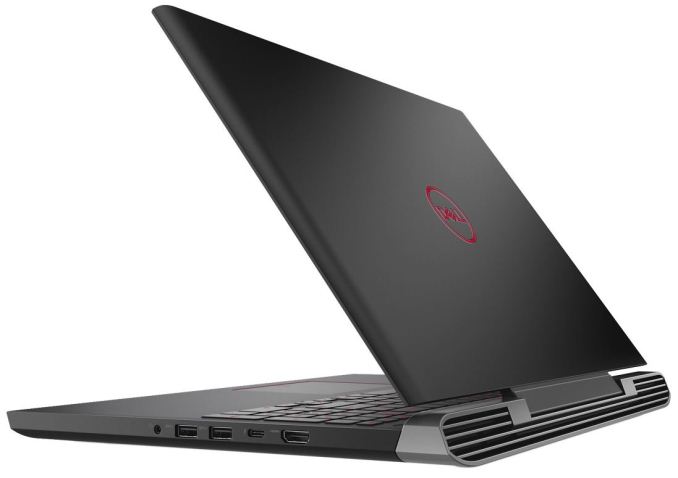
Another change to the Inspiron 15 7000 Gaming laptop is the inclusion of multiple radio antennas in the chassis in order to support 2x2 stream WiFi, increasing the laptop's WiFi speed and range versus the 1x1 solution used in the previous model. Dell also added Thunderbolt 3 connectivity via USB3.1 Gen2 Type-C port. It can support a 5K external display, dual 4K externals displays, or other high-bandwidth Thunderbolt peripherals (external GPU perhaps?).
Meanwhile, Dell has done away with the previous model's entry-level 1080p TN panel, and instead the laptop's base configuration now starts with their 1080p IPS Anti-Glare LED-backlit panel. Customization options still include the company's 1080p IPS Truelife LED-backlit Touch Display, along with a 4K UHD panel that is also IPS Anti-Glare LED-backlit.
7567 Revisited
Most everything else remains the same from the 7567 version. Drive configurations are anything from a single 1TB HDD to 512GB PCIe SSD. Mixed configurations of HDD and SSDs are also an option. System RAM capacity remains the same with options from 4-16GB 2400MHz DDR4; Up to 32GB. Connectivity outside of the Thunderbolt/USB Type-C port also is unchanged with an HDMI2.0 port, 3x USB3.1 Type-A (one with PowerShare), a Noble lock slot, 2-in-1 SD card reader, Gigabit Ethernet, and a 3.5mm headphone/mic port. Even the LED-backlit keyboard has been carried over. Complete Specifications are found in the table below (major changes in bold).
Dell tells us that the new model will be available in the US on September 12th, with prices starting at $999.Dell Inspiron 15 7000 Gaming 7567 (Early 2017) 7577 (Late 2017) CPU Intel Core i5-7300HQ 4C/4T Up to 3.5 GHz, 6MB Cache, 45W TDP
Intel Core i7-7700HQ 4C/8T Up to 3.5 GHz, 6MB Cache, 45W TDPGPU NVIDIA GTX 1050 4GB GDDR5
NVIDIA GTX 1050Ti 4GB GDDR5NVIDA GTX 1050 4GB GDDR5
NVIDIA GTS 1050Ti 4GB GDDR5
NVIDIA GTX 1060 6GB GDDR5Memory 4-16GB 2400MHz DDR4; Up to 32GB Display 1920x1080 TN LED Backlit Display 1920x1080 IPS Anti-Glare LED Backlit Display
1920x1080 IPS Truelife LED Backlit Touch Display
3840x2160 IPS Anti-Glare LED Backlit DisplayStorage 1 TB 5400 RPM HDD
1 TB 5400 RPM Hybrid HDD (8GB Cache)
Dual drive config w/ 128GB SSD + 500GB 5400 RPM HDD
Dual drive config w/ 128GB SSD + 1TB 5400 RPM HDD
Dual drive config w/ 256GB SSD + 1TB 5400 RPM HDD
256GB SSD
512GB PCIe SSDI/O 3 x USB 3.1 Ports
1 x Kensingtonlock Slot
1 x HDMI 2.0
1 x SD Card Slot
1 x Headset/Mic Jack
1 x GbE3 x USB 3.1 Ports
1 x Noble lock Slot
1 x 3.1 Gen 2 USB Type-C (w/ Thunderbolt 3 support)
1 x HDMI 2.0
1 x SD Card Slot
1 x Headset/Mic Jack
1 x GbEDimensions 24.5-25.5mm x 384.9mm x 274.7mm
1"-1.01 x 15.15" x 10.82" (HxWxD)24.95mm x 389mm x 274.7mm
.98" x 15.32" x 10.82" (HxWxD)Weight Starting @ 2.65 Kg / 5.84 lbs w/Core i7, UHD IPS non-touch Display, 512GB SSD Starting @ 2.65 Kg / 5.84 lbs w/GTX 1050, 128GB SSD, FHD non-touch
Starting @ 2.85 Kg / 6.28 lbs w/GTX 1060, 128GB SSD +1TB HDD, UHD non-touchBattery 74 Wh, 6-Cell Battery, 130W AC Adapter Quick-charge 56 Wh 4-Cell Battery, 130W AC Adapter Wireless/Network 802.11ac + Bluetooth 4.2, Dual Band 2.4 & 5 GHz, 1x1, Gbe 802.11ac + Bluetooth 4.2, Dual Band 2.4 & 5 GHz, 2x2, Gbe Price $799+ $999+
Related Items:
- Dell Launches AMD-Powered Inspiron Gaming Desktop
- HP Announces Ome X Laptop: 17.3" LCD, Core i7 + Geforce GTX with Overclocking
- EVGA Launches SC17 1080 Laptop: Core i7-7820JQ, GeForce GTX1080, TB3
More...
-
08-30-17, 09:22 AM #7292
Anandtech: ASUS Unveils ROG Chimera Gaming Notebook: 17.3-inch FHD at 144 Hz with G-S
This year at IFA there is a lot of laptop and notebook announcements. Most of them will be geared towards Intel’s new 8th Generation notebook processors that were announced last week, but there is still plenty of room for large and beefy gaming machines to take to the stage. In this category comes the ASUS ROG Chimera, a new laptop geared towards ‘twitch’ gamers that specialize in games that reward quick reactions.
Underpinning the laptop is going to be the display. For ‘twitch’ gaming, resolution and quality are arguably less important than smooth and quick gameplay, so the ROG Chimera comes in with a 144 Hz display combined with G-Sync variable refresh rate compatibility. The display is only a 1920x1080 resolution in a 17.3-inch form factor, which is moving away from the trend of higher resolution screens coming to laptops. Some might point to standalone monitors that can have higher resolutions than this, although finding one in a 17.3-inch form factor is going to be difficult. We suspect that this is a TN panel – when we get around to ASUS’s booth later in the show we’ll take a look.
Other hardware in the system comes via Intel’s Core i7-7820HK, the quad core mobile part that allows overclocking (ASUS states up to 4.3 GHz), and a GTX 1080 8GB mobile graphics module with a maximum boost of 1974 MHz. The keyboard incorporates a full keypad, and from what we can see a number of USB ports and video outputs. At this point ASUS is being cagy at the rest of the specifications, barring support for Xbox Wireless, so we’ll update this post when we get something more or some hands on time. Pricing and launch were not discussed.
Main image from Andrew Freedman, Laptop Mag
Related Reading- Acer Announces Predator Triton 700 Gaming Laptop: Core i7, GeForce GTX 10 Series, & 1 TB SSD
- Lenovo Launches Legion Branded Gaming Laptops
- EVGA Rolls Out SC17: High-End Gaming Laptop Designed for Overclocking
More...
-
-
08-30-17, 06:35 PM #7294
Anandtech: Alienware Announces AW3418DW and AW3418HW Ultra-Wide Curved Displays
Among their many IFA announcements this week, Dell’s Alienware group has introduced two ultra-large displays aimed at gamers. The monitors measure 34” in diagonal and feature refresh rates of over 100 Hz. In accordance with the recent industrial trends, the monitors feature NVIDIA’s G-Sync dynamic refresh rate technology, AlienFX RGB lighting, and thin bezels.
The Alienware AW3418DW will be the company’s new flagship IPS-based display boasting with a 3440×1440 resolution, a 120 Hz refresh rate (when overclocked), a 4 ms GtG response time, a 1900R curvature, 178°/178° vertical/horizontal viewing angles and NVIDIA’s G-Sync technology. When it comes to brightness, contrast and color accuracy, we are dealing with rather typical specifications for this class of monitors — 300 nits brightness, a 1000:1 contrast ratio and 99% of the sRGB coverage. As for connectivity, the display has one DisplayPort 1.2 and one HDMI 1.4 input, a quad-port USB 3.0 hub (with one upstream port) as well as 3.5-mm audio connectors. The Alienware AW3418DW is available immediately and carries a $1,499 price tag.
From outer design point of view, the Alienware AW3418HW haa a lot of similarities with the more advanced AW3418DW: it has the same diagonal size, AlienFX RGB lighting, cable management, a die cast metal stand and so on. Under the hood however, the lower cost 34” curved display is completely different from its more advanced brother. The AW3418HW has a 2560×1080 resolution, a 160 Hz refresh rate (when overclocked) with G-Sync treatment, a 4 ms response time and a 3800R curvature. Given a lower resolution, the AW3418HW will be significantly cheaper than the AW3418DW — it is going to cost $1,199 when it becomes available later this holiday season.
The new ultra-wide 34” monitors from Alienware will complement the company’s 25” display it announced earlier this year. As it appears, the company sees demand for screens designed specifically for gaming, which is why it is expanding the lineup. It is evident that when designing its displays Alienware focuses primarily on features important for gamers: maximum refresh rate with dynamic refresh support, curvature, but not high resolution per se. Such approach makes a great sense because not every gamer has a graphics card that has enough processing horsepower to run the latest games in a 4K resolution (or similar) at 120 – 160 Hz, which is why the monitors like AW3418DW and AW3418HW have all chances to become popular among those who spend a lot of time playing games.Alienware's 34" Curved Displays AW3418DW AW3418HW Panel 34" IPS 34" Native Resolution 3440 × 1440 2560 × 1080 Maximum Refresh Rate 120 Hz overclocked 160 Hz overclocked Response Time 4 ms Brightness 300 cd/m² unknown Contrast 1000:1 Viewing Angles 178°/178° horizontal/vertical unknown Curvature 1900R 3800R Pixel Pitch 0.233 mm 0.31 mm Pixel Density 109 ppi 81.72 PPI Anti-Glare Coating Yes Color Gamut 99% sRGB unknown Dynamic Refresh Rate NVIDIA G-Sync Inputs 1 × DP 1.2
1× HDMI 1.4unknown USB Hub 4-port USB 3.0 hub,
one USB Type-B upstream portAudio audio in/out ports Power Consumption Idle: 0.5 W
Typical: 60 Wunknown RGB Lighting AlienFX programmable RGB LED lighting Launch Price $1499.99 $1199.99
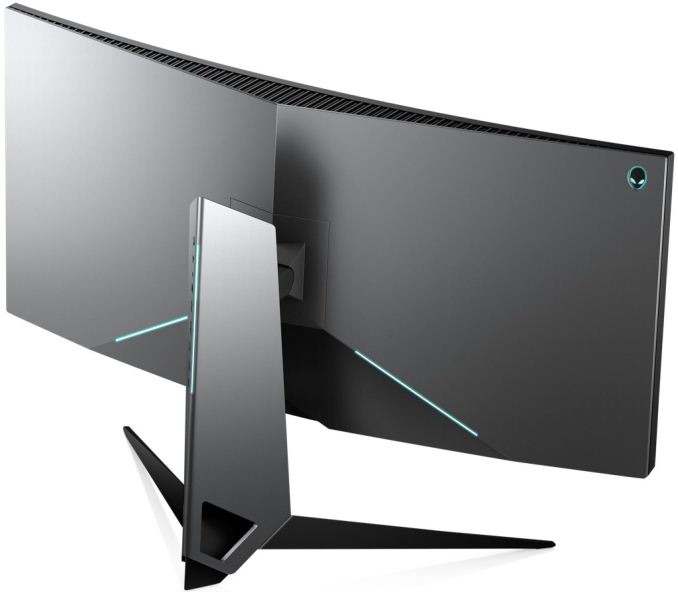
Related Reading:
- Dell’s UltraSharp U3818DW Now Available: Curved 37.5”, 3840×1600, USB-C, $1499
- Dell Announces UP3218K: Its First 8K Display, Due in March
- Dell Unveils UltraSharp U3417W: Makes Its Curved Display More Curved
- Alienware Area-51 Threadripper Edition Announced at E3, Available for Order July 27
More...
-
08-30-17, 07:24 PM #7295
Anandtech: ASUS Announces ZenBook Flip 14 and Flip 15
Continuing our coverage of IFA 2017, ASUS has announced the release of two new 2-in-1s. First, the Zenbook Flip 14; ASUS touts this to be the worlds thinnest 2-in-1 laptop. And the Zenbook Flip 15, said to be the most powerful Zenbook Flip ever using the latest 8th Generation Intel Core processors. Shawn Yen, ASUS’ Senior Product Director said on stage at IFA, “the major objective of this product is bringing the benefits and versatility of a 2-in-1, with the mobility of an ultrathin. Marry those two benefits together and empower user’s needs for graphics." And in comes the latest generation Zenbook Flips.
Asus Zenbook Flip 14
The Zenbook Flip 14 UX461 is very thin and light for a convertible laptop measuring just 13.9mm(.55") thick and weighing 1.4 kg (3.1 lbs). The 8th generation CPU is a Core i7-8550U 4C/8T chip with a base processor frequency of 1.8GHz and a maximum turbo frequency of 4GHz. The Flip 14 can be configured with up to 16GB 2400 MHz DDR4 RAM and 1TB PCIe SSD for fast storage. It also includes a fingerprint reader and speakers tuned by Harmon Kardon. Additionally, the Flip 14 includes a discrete GPU, the NVIDIA MX150, which helps with graphically intensive tasks an onboard graphics solution may find problematic. Even with more powerful hardware inside, battery life is said to be up to 13 hours.
The chassis styling has changed a bit going away from the brushed aluminum look and going with more of a medium gloss flat finish instead. The Flip 14 has two color options in Icicle Gold and Slate Grey (pictured above). ASUS’ NanoEdge technology makes its way to the 14-inch 1080p display making it very thin. The result is a 13-inch footprint from a 14-inch laptop. The Flip 14 will start at 799€ (~$900) and ASUS has not provided dates for availability.
Gallery: ASUS ZenBook Flip 14



Asus Zenbook Flip 15
The ZenBook Flip 15 UX561 is a 15.6” 2-in-1 following similar themes to the 14, but instead is designed to be a larger, high performance laptop. The nod here goes to its use of the same i7-8550U 4C/8T 1.8GHz-4GHz processor and NVIDIA's GeForce GTX 1050 graphics. Asus mentions it can be up to two times faster (Cinebench R15) than the previous generation UX560 which used an i7-6500U (dual-core with hyperthreading) from a previous generation. The GTX 1050 is a decent upgrade on the performance side and saves power over the GTX 950 used before.
The Flip 15 can be configured with up to a 512GB SSD, a 2TB hard drive, and 16GB 2400 MHz DDR4 RAM. It also has precision stylus support, as well as Thunderbolt 3 ports for advanced peripheral attachment. The new 2-in-1 uses NanoEdge bezels and offers an optional 4K UHD resolution screen. There are also two color options here, Smoke Grey(pictured) and Pure Silver. The ZenBook Flip15 starts at 899€(~$1000), and like the Flip 14, we're still waiting on hear on when precisely it will hit the market.
Gallery: ASUS ZenBook Flip 15



Related Items:
- ASUS ZenBook 3 Deluxe UX490UA: Kaby Lake, 16GB RAM, 1TB SSD, TB3, 14" FHD. 2.4lbs
- Samsung Announces Notebook 9 Pro 2-in-1, Includes S Pen Stylus
- Huawei Launches the MateBook E 2-in-1: The Next Generation
More...
-
08-31-17, 03:01 AM #7296
Anandtech: Hands on with the LG V30/V30+: 6-inch OLED 2880x1440 Display, Quad DAC, IP
As part of their IFA 2017 showcase, this morning LG is unveiling their long-rumored next-generation flagship phone, the V30. Like its predecessor, the LG V20, the V30 hasn't exactly been a well-kept secret, with several leaks springing over the last month. Still, with the official announcement from LG, we're finally getting a complete look at the phone.
Some of the feedback that LG received for the LG V10 and the LG V20 explained that the smartphones were considered ‘too professional’ for the mass market and younger generations. Despite LG’s heavy marketing to millennials using celebrities such as Joseph Gordon-Levitt, the dual screen combinations had an interesting feature set but often sat in the store next to their better selling competitors. To crank up the base of Generation V (what LG calls the millennial generation targeted by the V-series), the biggest and most noticable design change for the V series is that the new V30 drops the slightly esoteric dual screen design in favor of a single, larger FullVision OLED display, with super narrow bezels to make as much of the phone a display as possible.
For our hands-on, LG requested that we clarify that the devices are pre-production preview models, and some features/issues may change between now and launch.LG V-Series Smartphones LG V30 LG V20 LG V10 SoC Qualcomm Snapdragon 835
2x Kryo 280 @ 2.45 GHz
2x Kryo 280 @ 1.90 GHz
Adreno 540 @ 710 MHzQualcomm Snapdragon 820
2x Kryo @ 2.15GHz
2x Kryo @ 1.59GHz
Adreno 530 @ 624MHzQualcomm Snapdragon 808
2x A57 @ 1.82GHz
4x A53 @ 1.44GHz
Adreno 418RAM 4GB LPDDR4X 4GB LPDDR4 4GB LPDDR3 NAND 64GB (UFS 2.1) + microSD 64GB (UFS 2.0)
+ microSD32GB/64GB
+ microSD128GB for V30+ Display 6.0 inch 2880x1440 OLED 5.7-inch 2560x1440 IPS LCD
2.1-inch 160x1040 LCD (Secondary)5.7-inch 2560x1440 IPS LCD
2.1-inch 160x1040 LCD (Secondary)Dimensions 151.7 x 75.4 x 7.3 mm
156 grams159.7 x 78.1 x 7.6 mm
174 grams159.6 x 79.3 x 8.6 mm
192 gramsModem Qualcomm X16 (integrated)
2G / 3G / 4G LTE
(Category 16/13)Qualcomm X12 (Integrated)
2G / 3G / 4G LTE (Category 12/13)Qualcomm X10 (Integrated)
2G / 3G / 4G LTE (Category 6/9)SIM Size NanoSIM NanoSIM NanoSIM Front Camera 5MP, f/1.9 5MP, f/1.9 Primary: 5MP, f/2.2 Wide Angle: 5MP, f/2.2 Rear Camera Primary: 16MP, f1/6, Sony IMX351, Laser AF, PDAF, OIS, LED Flash Primary: 16MP, f/1.8
Sony IMX298 Exmor RS
Laser AF, PDAF, OIS, LED flash16MP, f/1.8 Laser AF, OIS, LED flash Wide Angle:
13MP, f/1.9Wide Angle: 8MP, f/2.4,
Sony IMX219 Exmor R
Laser AF, PDAF, OIS, LED flashBattery 3300 mAh
non-replaceable
WIreless Charging3200 mAh (12.3 Wh)
replaceable3000 mAh (11.55 Wh)
replaceableConnectivity 802.11ac, BT 4.2, NFC, GPS/GNSS, DLNA, USB Type-C 802.11ac, BT 4.2, NFC, IrLED, GPS/GNSS, DLNA, USB 2.0 Type-C 802.11ac, BT 4.1, NFC, GPS/GNSS, SlimPort, DLNA, microUSB 2.0 Launch OS Android 7.1.2
with LGUXAndroid 7
with LGUX 5.0Android 5.1
with LGUX 4.0
Under the hood, the V30 is powered by Qualcomm's Snapdragon 835, with LG using a heatpipe to assist in cooling. This is paired with 4 GB of LPDDR4X, and either 64GB or 128GB of UFS 2.1 storage. The 128GB model will be sold as the V30+ model, and will only be available in some countries (I was told that the V30 itself is not fully worldwide, and the V30+ will still cover most of those but not all). The battery is virtually unchanged from the V20, its 3300 mAh capacity being just 100 mAh larger than its predecessor. Some journalists suggested that this might be a design oversight, given the larger size and OLED display in this unit – LG stated that the battery life is still good for an honest day of use. On a personal note, just be wary of the brightness: LG does offer screen dimension reduction tools, which might help here. With the battery the V30 is supporting Qualcomm’s Quick Charge 3.0 technology, giving 50% charge in 30 minutes under supported chargers, and the V30 will also have wireless charging.
Overall, the main display is the hardest thing to miss when seeing the phone for the first time. The 6-inch diagonal QHD+ (2880x1440) resolution display is big and bright. And even though I've used phones like the Mi MIX, which does things like crazy placement, for all intents and purposes this is a very narrow bezel phone, and a large phone at that. LG uses their pOLED technology here, which they were keen to point out is still an ‘active matrix’ type of OLED, however AMOLED is the Samsung brand name. The technology means that LG is supporting HDR10 out of the box for suitable content, boasts an always-on lock screen at super low power, and can crank up the brightness that’ll tear through your battery life in a few short hours. With the 6-inch display, OLED, and a high 537 pixels per inch, LG is also supporting Daydream VR with the new V30.
The aim for the V30 is all about visuals. A better display, a better camera, new camera features, and overall a new visual experience for users that share content either as a video creator or as an image junkie. Moving to the camera, LG is employing a dual camera system, using a 71° degree main camera with the new Sony IMX351 sensor supporting OIS, and a 120° wide angle camera for wider shots and some zoom functionality. The primary rear camera is a 16MP design with a f/1.6 aperture, noted as being the widest in the market. This is combined with a new lens strategy, whereby the 6-element lens now makes one of them glass (rather than them all being plastic), which LG states as offering 4% more light into the sensor. We were told that the first lens element is the one updated, as when they tested the full range, this made the most difference. On the back of this change, LG is stating that their dynamic range is wider than their competitors, offering 11 stops at 6 dB rather than 9.5, and competing with more expensive cinema cameras and beating the smartphone competition. This also means wide color gamut support, using logarithmic color imaging (rather than a linear scale) for a much wider dynamic range. The log color support is via a new feature for their camera, LG Cine Log.
LG spent a lot of time talking to us about Cine Log. Using the manual video mode and enabling Cine Log, and recording the color information with the MPEG4 video, users can combine the data with their own custom look-up-tables using software such as DaVinci Resolve in order to adjust the color tone mapping. Inside the Cine Log portion of the app, users can already select 15 different cinematic effects that LG used experienced outside video editing professionals to help calibrate. This includes effects such as romantic, drama, mystery, thriller, documentary, noir, flashback, scenery, melodrama, classic and pop-art. On the face of it, these might appear to be extensions of popular filter apps, but LG states that their solution is more than just a simple filter, using specific color enhancement. We took a few photos of a lamp in a dimly lit room and could see a difference.
Another feature of Cine Log is point-zoom, which allows the user to zoom in to any part of an image, rather than requiring the camera to be moved to actually face the object in the dead center.
Not specifically in Cine Log is an app called Graphy, providing a series of stock photos with various ‘looks’ and feels to them. Users can recreate the professional settings of these photos for any images of their own by selecting them – the app applies all the required settings.
For video recording, LG is promoting the inclusion of two high-performance microphones in the design. With the addition of the standard phone receiver, the internal DSP will combine the audio from all sources to provide a single output (although they don’t state what the target SNR of the path is). LG stated that this audio is good at 24-bits and 96 kHz, though that doesn’t state anything about the quality. I played around with the feature, and it does offer some immediate features that should be on all smartphones: additional gain jumps, low-frequency filters, and a limiter for clipping.
It’s worth noting at this point in our briefing, one of the analysts mentioned that at the beginning LG was targeting ‘Generation V’ / millennials with their new phone, but so far all the features being presented were still very hard technology tools for experts and professionals. LG responded by saying that most of these features were available as one-button behind the scene applications: many of these users know how to apply a filter, and the application of their tools that are more complicated underneath the surface can be done in the same way.
LG was keen to discuss their audio technology. In the V30 they are using a ‘Quad DAC’ implementation, supporting 24-bit lossless audio output through the headphones. They are keen to promote that the V30 is the world’s first MQA mobile player for HiFi streaming – MQA is the Master Quality Authenticated audio codec using compression and file fingerprinting suitable for high fidelity digital audio from internet streaming. The HiFi modes on the phone are only available through the 3.5mm TRRS audio jack, and offer a small selection of EQ modes for different types of music. To assist with the audio experience, LG is partnering with Bang & Olufsen Play to provide some very reasonable in ear headphones.
I tried to do some non-blind testing while I was at the show, however all my lossless audio files are at home. What I did have to hand was entirely subjective – I couldn’t blind test, and the only real difference I heard was when I adjusted the EQ settings. LG doesn’t implement a full EQ configuration tool here, although I assume a third-party app could do the business.
For non-audio-visual features, LG is promoting its new voice recognition unlock. This allows the user to pick their own 3-5 syllable phrase to unlock the phone. Technically all Qualcomm Aqstic capable smartphones should be able to do this, and it allows unlock functionality in combination with face recognition, fingerprint recognition, and LG’s Knock code. The lock screen also provides a permanent display of the clock, the battery life, and any relevant notifications. The OLED panel we were told helps keep the power low with this feature, especially as the refresh rate can be super low (I imagine as low as one frame a minute, perhaps).
LG is also playing the AI game, by providing Google Assistant with the device. LG has worked with Google for LG specific commands, mainly for the camera, to allow certain voice commands to start recording video in wide angle mode, in Cine Log mode, or in manual mode. The idea being that the user can prop the smartphone up somewhere and tell it to start taking a video. Unrelated to Google Assistant, but LG will allow the camera to take an image when the user says the word ‘Kimchi’. I found this mildly amusing and very Korean.
LG talked a lot in our pre-briefing about color accuracy, mainly pointing at the camera technology, although they didn’t state what color accuracy they were aiming for on the display. The software does have an additional option to enable sRGB mode for photos, but in our preview device even at minor viewing angles we saw a very noticeable blue tinge.
For the design, LG is using a Gorilla Glass 5 back and front cover here; with a choice of Aurora Black, Moroccan Blue, Cloud Silver and Lavender Violet colors (some regions may not have all colors). The design is tested to MIL-STD-810G standards, known as MIL spec, and carries an IP68 rating, meaning that it is waterproof in 150cm / 5 feet of water for 30 minutes. That also typically means that manual repairs are a pain without warming up all the waterproof sealant in the device, unless LG is using O-rings to do the business. I’ll wait for iFixit’s teardown.
The LG V30 comes with a single USB Type-C port (no word if it is USB 2.0 or USB 3.0), and the power button is now part of the rear fingerprint sensor. Moving the power button from the side confused me for a strong minute, as the only other buttons on the device were the volume buttons on the left. The fingerprint sensor being on the rear is more suitable than one off to the side, and personally I'm not used to fingerprint buttons on the front. But in anecdotal testing the sensor recognition is a shade slower than my Mate 9, but not noticeably so unless you are concentrating hard.
LG is committed to bringing Android 8 over to the V30, and have us a tentative ‘probably within the next 6 months’ as an answer about moving on up.
This hands-on was a really small timeframe to test the handset – it was put in my hand at 10pm, I went to eat dinner, and it’s now 2am while I’m still writing it up. The press event for LG tomorrow starts at 8am for doors open, 9am for the presentation, so there’s not much to say yet aside from the general feel of the device (plus, as it stands I’ll get 4 hours sleep tonight). Personally, it’s going to be interesting – I’ve never used a phone with OLED or wireless charging yet, and with my current daily driver starting to feel the effects of slowdown, I’ll take this V30 for a spin for a few months and report back.
Gallery: LG V30 Hands On





More...
-
-
08-31-17, 09:58 AM #7298
Anandtech: Now Shipping: AMD Ryzen Threadripper 1900X & Ryzen Pro CPUs
Back when AMD announced their leading-edge Ryzen Threadripper 1950X and 1920X, the company also tucked in an announcement that there would be a third, cheaper Threadripper: the 1900X. Now after about a month’s wait since the first two chips launched, the 1900X is finally hitting the streets.
Of AMD’s Threadripper product stack, the 1900X is easily the most unusual of the chips. Whereas the 1950X and 1920X were the full-fledged version and the cheaper-but-still-thread-heavy-alterative respectively, the 1900X doesn’t really fit into either of those buckets. In fact with just 8 cores active, it has more in common with the Ryzen 7 1800X than it does the rest of the Threadripper family.AMD High-End Ryzen SKUs Cores/
ThreadsBase/
TurboXFR L3 DRAM
1DPCPCIe TDP SRP TR 1950X 16/32 3.4/4.0 +200 32 MB 4x2666 60 180W $999 TR 1920X 12/24 3.5/4.0 +200 32 MB 4x2666 60 180W $799 TR 1900X 8/16 3.8/4.0 +200 16 MB 4x2666 60 180W $549 Ryzen 7 1800X 8/16 3.6/4.0 +100 16 MB 2x2666 16 95 W $499 Ryzen 7 1700X 8/16 3.4/3.8 +100 16 MB 2x2666 16 95 W $399
So why is AMD releasing an 8 core version of Threadripper when one Zeppelin die can accomplish the same thing at $100 less and almost half the TDP? Because while the 1900X may be a few cores short of a full Threadripper, it retains the platform’s immense I/O and memory bandwidth capabilities. In other words, 4 DDR4 memory channels and 60 + 4 PCIe lanes, offering twice the cumulative memory bandwidth and three times as many freely available PCIe lanes as AMD’s standard Ryzen processors. In fact other than cores, the only other thing it loses out on from the 1950X is L3 cache, with 16MB rather than the 32MB of its higher core counterparts. Conversely, its 3.8GHz base clockspeed makes it the highest base clockspeed of all of AMD’s Ryzen CPUs, standard and Threadripper.
Buy AMD Threadripper 1900X on Amazon.com
It does bear mentioning that Threadripper’s multi-die layout does comes with the same potential caveats as the other SKUs, which is why the 1900X isn’t going to be equal to or better than the 1800X in all scenarios. However with a MSRP of $549, the 1900X is now the cheapest way to get a high-I/O x86 processor. So for tasks that require a more limited number of threads and a lot of I/O and memory bandwidth, the 1900X should fit comfortably in its niche.
As for reviews of the new processor, unfortunately AMD did not sample the 1900X in advance. We're angling to get one in soon, so please stay tuned for that.
Gallery: AMD Threadripper 1900X Slide Deck





Meanwhile also shipping out the door from AMD today is their Ryzen PRO processors. Announced back at the end of July, these are enterprise IT -focused versions of AMD’s standard Ryzen processors, offering longer support periods along with features such as enhanced security and added manageability features. Accordingly, AMD’s partners have started showing off their latest enterprise-systems, with Dell, HP, and Lenovo all set to begin shipping Ryzen PRO-equipped systems in the following weeks.
AMD Ryzen PRO Specifications Cores/Threads Frequency Cache TDP Base Boost L2 L3 Ryzen 7 PRO 1700X 8/16 3.5 GHz 3.7 GHz 4 MB 16 MB 95 W Ryzen 7 PRO 1700 3 GHz 3.7 GHz 65 W Ryzen 5 PRO 1600 6/12 3.2 GHz 3.6 GHz 3 MB Ryzen 5 PRO 1500 4/8 3.5 GHz 3.7 GHz 2 MB Ryzen 3 PRO 1300 4/4 3.5 GHz 3.7 GHz 8 MB Ryzen 3 PRO 1200 4/4 3.1 GHz 3.4 GHz
More...
-
08-31-17, 10:58 AM #7299
Anandtech: Razer Reveals New Blade Pro: GTX 1060 Graphics, Full HD, Lower Price Point
Those familiar with the desktop replacement market (DTR) likely know Razer and what it brings to the table with its Razer Blade Pro laptop. For those that are not, this powerful laptop that could shoehorns in an i7-7820HK CPU with 4c/8t offering speeds to 4.3 GHz when overclocked. It sports a 17.3” 4K UHD IGZO G-SYNC display and comes with a fully appointed GTX 1080. High-end specs in a laptop like this can certainly put a hurting on your wallet with the 4K THX Certified Blade Pro described above fetching $4000 and up. Announced at IFA and filling in the lower price point is Razer's new Blade Pro Full HD which is targeted towards gamers and creative professionals who need power desktop replacement...without spending $4000.
Just as the name implies, the 17.3", 120Hz IPS screen sports a 1920x1080 resolution. Not needing to push so many pixels, it comes with a GTX 1060 6GB GPU. While the GTX 1060 isn't a slouch, I would prefer to see a 120Hz monitor matched up with a faster GPU (GTX 1070 perhaps?) in order to enjoy the faster refresh rate in more games longer. But, the point of this product isn't top notch performance. There is more of a focus on being a budget gaming laptop/desktop replacement with the Full HD.
Available system memory also starts out at 16GB(2x8GB) 2400MHz (4K model uses 2667MHz) DDR4 expandable to 32GB (2x16GB). A unique feature to the Full HD model is having actual SODIMM slots and the ability to upgrade the ram. The 4K version has soldered in 32GB; no upgrade is possible there. Storage options also change between the two models with the Full HD's base offering a 256GB M.2 PCIe SSD (expandable to 2TB M.2 PCIe). They also do not offer RAID options. Instead of storage drives all compromised of M.2 PCIe drives, the Full HD favors a slower, cheaper, but higher capacity 2TB mechanical drive (expandable to 4TB HDD). See more details in the specifications table.
Some other differences between these two come in the form of weight reduction from 7.8 to 6.8 lbs as well as the Full HD model using a 70 Wh battery with the same 165W AC Adapter from the Blade 14, instead of the 99 Wh battery and 230W AC Adapter combo in the more expensive Blade Pro. Another cost saving change was the Full HD model losing the mechanical keyboard and going with a membrane based keyboard, which is the same one found in the Blade 14.
Dimensions of both laptops remain the same since its the same chassis with different underpinnings (and design cues). Connectivity is also the same with three USB 3.0 ports, a Thunderbolt 3 port for high-bandwidth/advanced connectivity, HDMI 2.0 (VR Ready), SDXC card reader, and the Killer DoubleShot Pro network technology employing a Killer E2400 Gbe, as well as the Killer Wireless-AC 1535 (802.11 a/b/g/n/ac, 2x2:2 with Bluetooth 4.1). Like the Blade 14, the FHD Blade Pro also supports the Razer Core for eGFX, if necessary.
See both the 4K and Full HD model specification comparison in the table below.
Base price on the Full HD machine with the 256GB M.2 PCIe SSD is $2299.99. The cost will go up when increasing capacity on the SSD and/or HDD. Availability of the Razer Blade Pro Full HD will be Worldwide in Q4 2017.Razer Blade Pro Model 4K Full HD CPU Intel Core i7-7820HK
4C/8T
2.9-3.9 GHz
8MB Cache
45W TDPIntel Core i7-7700HQ
4C/8T
2.8-3.8 GHz
6MB Cache
45W TDPGPU NVIDIA GTX 1080 8GB
2560 CUDA Cores
1556 - 1733 (Boost) MHzNVIDIA GTX 1060 6GB
1280 CUDA CoresMemory 32GB 2667MHz DDR4 Soldered 16GB 2400 MHz DDR4 SODIMM Display 17.3" 3840x2160 60 Hz w/G-SYNC 17.3" 1920x1080 120 Hz IPS Storage 512GB (2 x 256GB) M.2 PCIe SSD
1TB (2 x 512GB) M.2 PCIe SSD
2TB (2 x 1TB) M.2 PCIe SSD256GB M.2 PCIe SSD
(Expandable to 2TB M.2 PCIe SSD)
2TB HDDI/O 3 x USB 3.0 Ports
1 x Thunderbolt 3
1 x HDMI 2.0
SDXC Card Slot
1 x Headset Jack
1 x Killer E2400 Ethernet (10/100/1000Mbps)Dimensions 22.5mm x 424mm x 281mm (HxWxD)
0.88" x 16.7" x 11" (HxWxD)Weight 3.54 kg / 7.8 lbs 3.07 kg / 6.8 lbs Battery 99 Wh, 250W AC Adapter 70 Wh, 165W AC Adapter Wireless Killer Wireless-AC 1535
2x2:2 with Bluetooth 4.1Price $3999.99+ $2299.99+
Razer Rogue Backpack 17.3"
At IFA, Razer also announced a companion product to their 17" laptops introducing the Razer Rogue Backpack 17.3". From the looks of it, not much has changed outside of the size and ability to carry larger laptops. Its smaller siblings offered a tear and water-resistant exterior, a TPU padded scratch proof interior protecting the laptop, and a dedicated compartment for the laptop itself. The backpack is a frameless design with heavily padded shoulder straps and back panel. Razer says the Rogue backpack is engineered to evenly distribute the weight of heavier loads over the back while the chest strap is said to prevent fatigue.
Gallery: Razer Rogue 17.3" Backpack




Pricing and availability were for the 17.3" backpack were not released at the time of publication. The smaller 15.6" is $99.99 through the Razer website so I would expect the larger model to cost a bit more.
Related Items:
- Razor Updates The Razer Blade Stealth: More Screen, Less Bezel, New Color Option
- Razer Updates The Razer Blade Pro With THX Certification
- The 2016 Razer Blade Pro Review
More...
-
08-31-17, 12:15 PM #7300
Anandtech: ASUS Details HC102 Mixed Reality Headset for Windows
ASUS has revealed new details about its upcoming Windows Mixed Reality headset, including specifications and price--essentially everything except for timing.
Microsoft is gearing up for the Windows 10 Fall Creators Update, which will introduce the company’s virtual reality platform: Windows Mixed Reality. Leading up to IFA in Berlin, Microsoft invited journalists to test out the Windows MR motion controllers, which may have kick-started a chain reaction of announcements from Windows MR hardware partners. On Monday, Dell revealed its aptly named Visor HMD. Tuesday, Acer spoke briefly of its Windows Mixed Reality HMD, though it didn’t reveal anything we didn’t already know about the bright blue headset. And now today, ASUS played its mixed reality hand.
Unlike Dell, ASUS didn’t give its HMD a fancy name. It's simply the ASUS Windows Mixed Reality Headset. It offers dual 1440 x 1440 pixel displays (for a total of 2880 x 1440) that operate at up to 90Hz. The HMD also includes the typical sensors you would expect, such as a gyroscope, accelerometer, and magnetometer. Microsoft’s Windows MR platform offers inside-out tracking (6DoF) systems that don’t require external cameras, and each Windows MR HMD features two front-facing cameras that provide spatial tracking for the unit. The ASUS headset also includes a proximity sensor. We’re not yet sure if that’s standard equipment for Windows MR headsets or a unique feature of the ASUS HMD.ASUS HC102 Windows Mixed Reality Headset Specifications Display 2x LCD Resolution 2880x1200 (combined)
1440x1440 (per eye)Refresh Rate 90 Hz FOV 95° Sensors Gyroscope: 6 degrees of freedom tracking
Accelerometer
Magnetometer
ProximityPosition Tracking Inside-Out Camera (x2) Audio 3.5mm Audio Jack Controls Microsoft Motion Controllers Launch Price €449 (w/ Motion Controllers)
ASUS said it focused on designing a headset that would offer good hygiene. Room-scale VR games get you up and moving, and it’s not uncommon to break a sweat while playing an active game. ASUS said that the face cushion on its Windows MR headset is made of a fast-drying material with an anti-bacterial coating on the surface.
The Windows MR platform is billed as a productivity platform as much as it is an entertainment platform. Microsoft sees a future where you’ll do your work within VR and then play games in VR with the same hardware. ASUS made sure that its headset is comfortable to wear for long periods of time. It features a “balanced crown” design, which takes the pressure off of your cheeks and nose and distributes the weight between your forehead and the back of your head. Also, the headset weighs less than 400g, so it should put minimal stress on your neck.
ASUS didn’t say when it would release the ASUS Windows Mixed Reality Headset, though it said the hardware would sell with Microsoft’s motion controllers for €449. The company didn’t reveal the US price. Dell’s Visor headset is scheduled for an October release, and we imagine that ASUS would shoot for a similar launch window.
Kevin Carbotte contributed to this report
More...
Thread Information
Users Browsing this Thread
There are currently 8 users browsing this thread. (0 members and 8 guests)





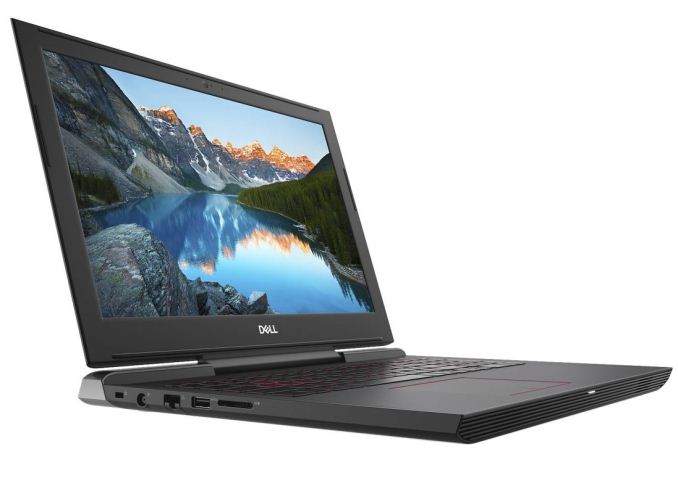
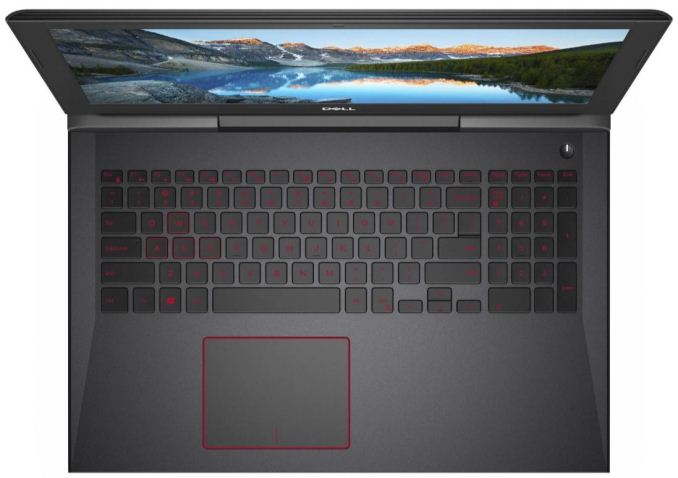

 Quote
Quote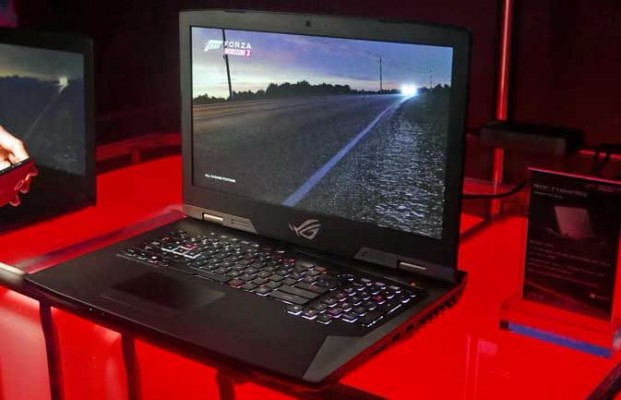


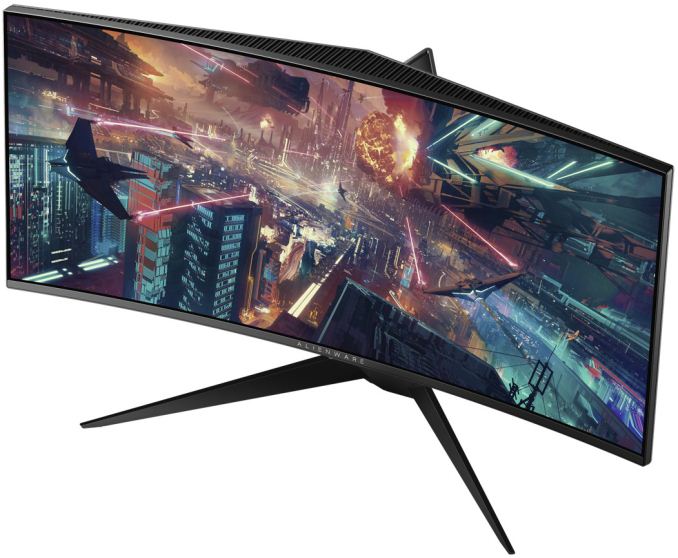

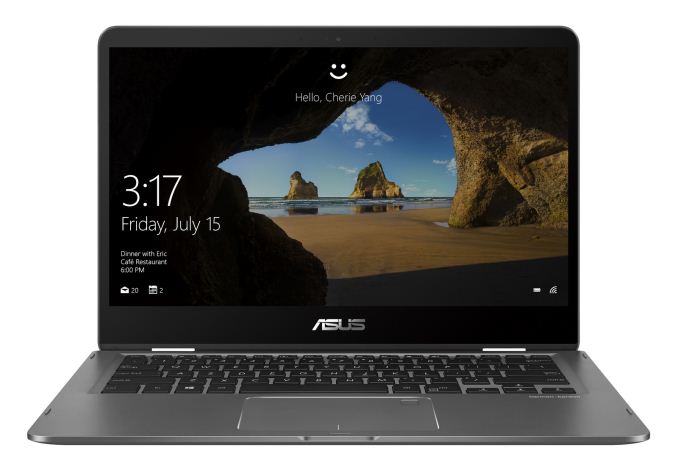







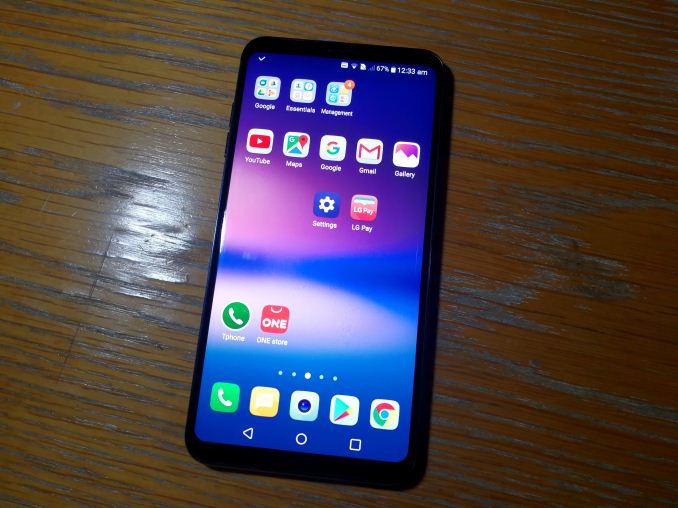

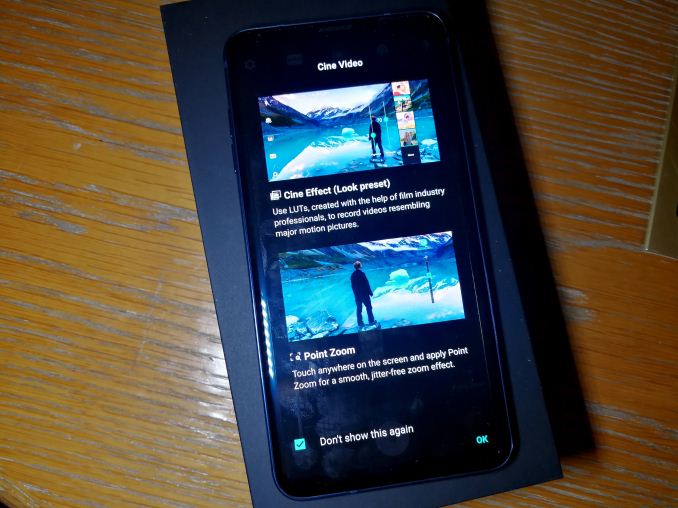
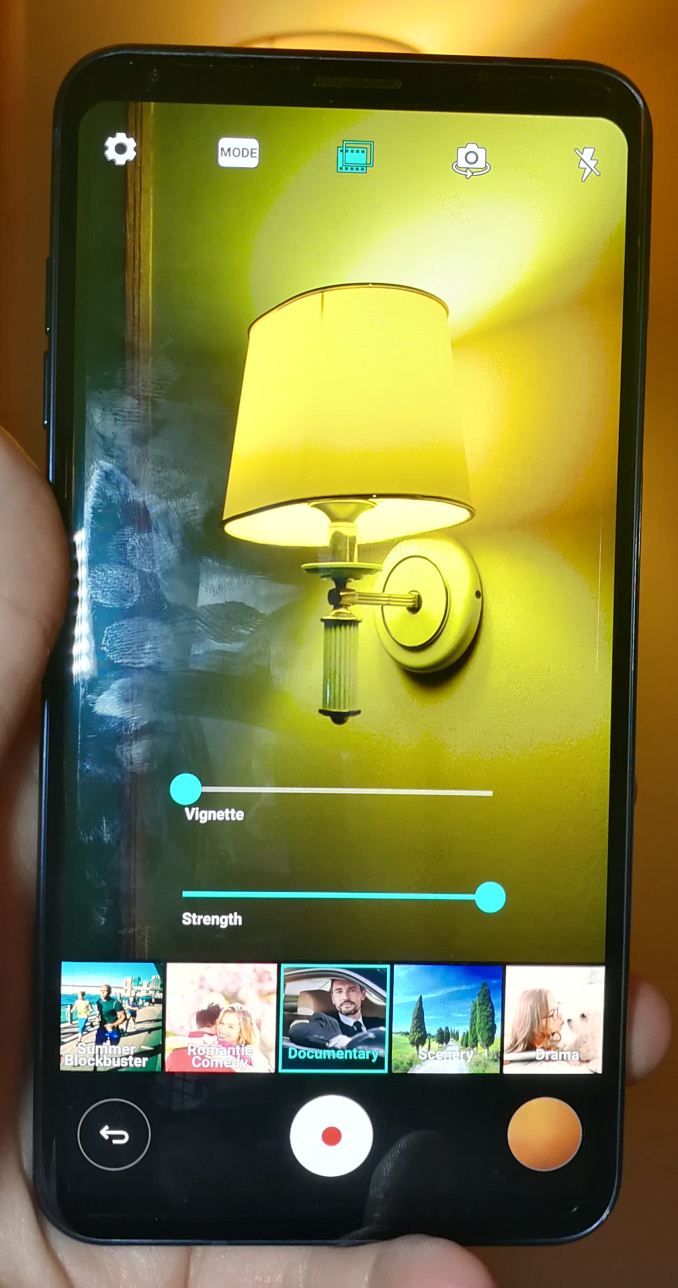

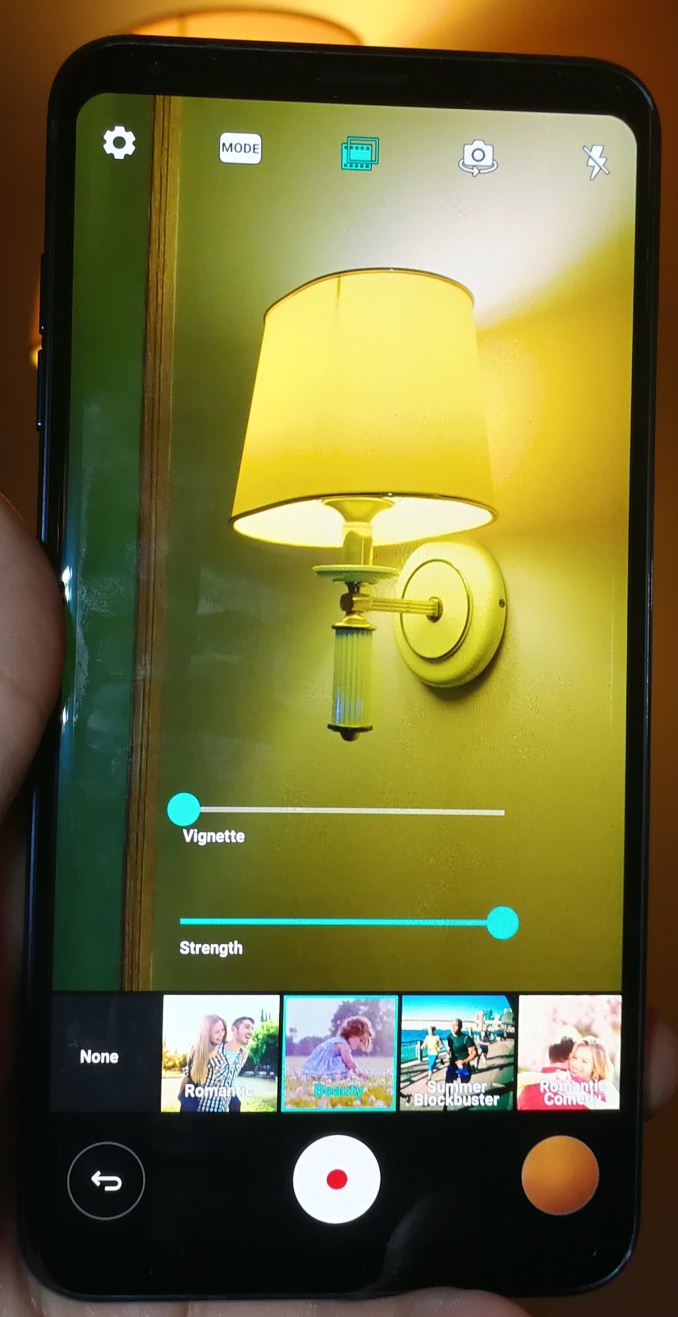




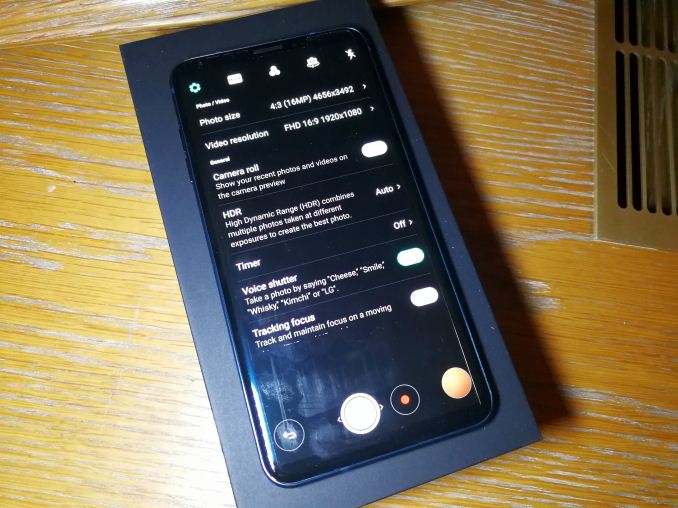



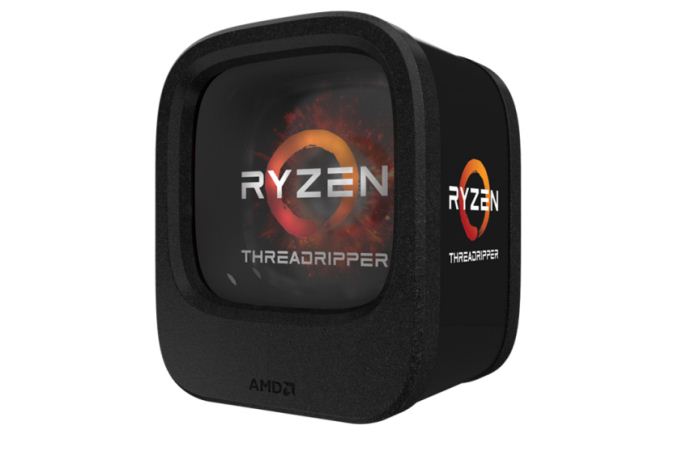

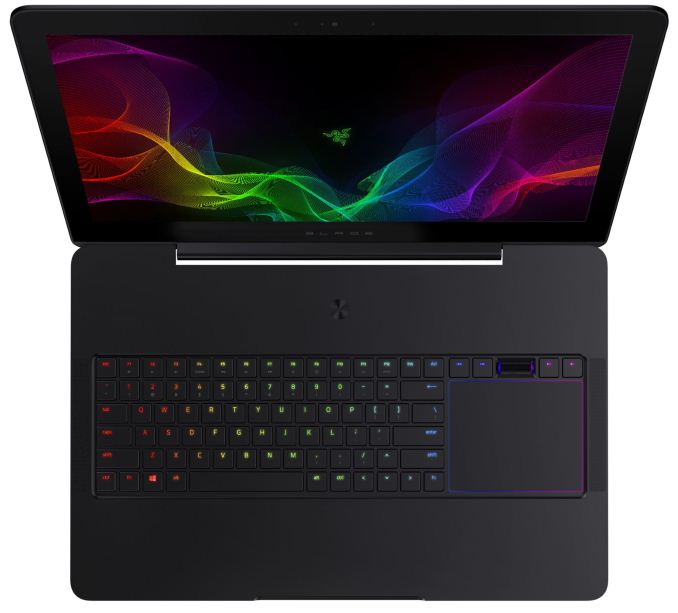




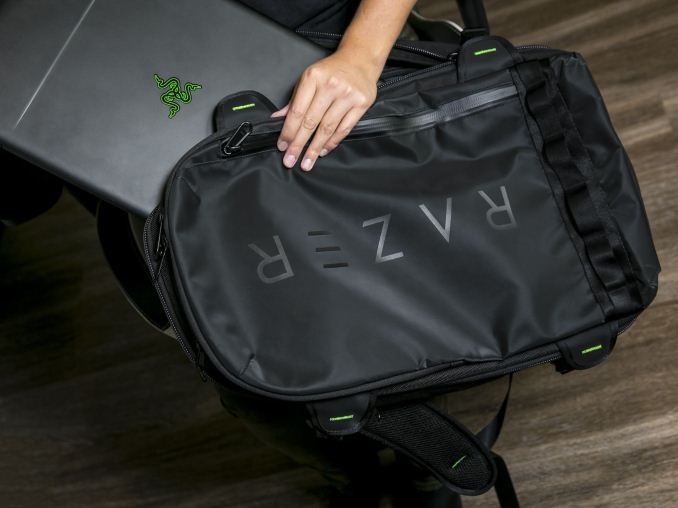
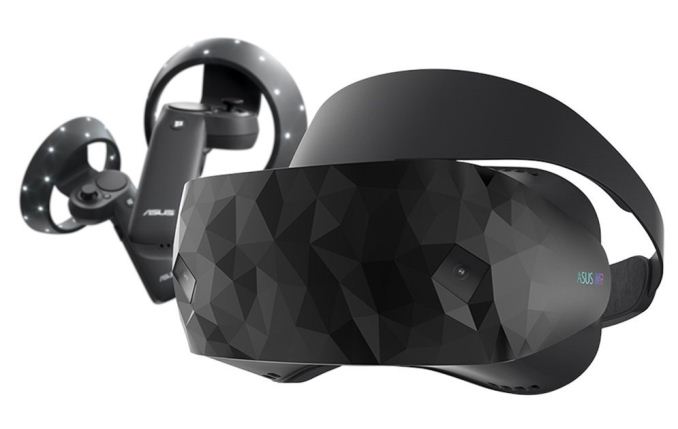
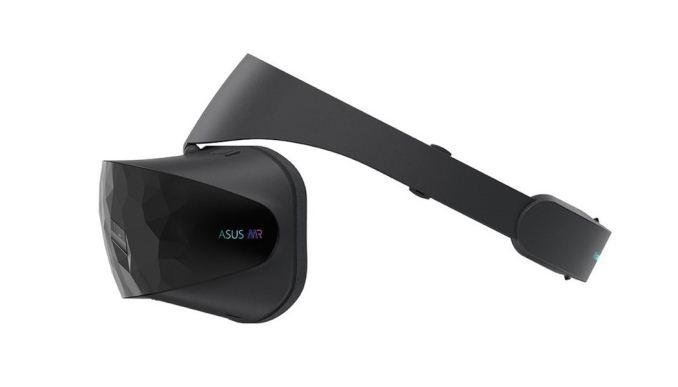
















Bookmarks